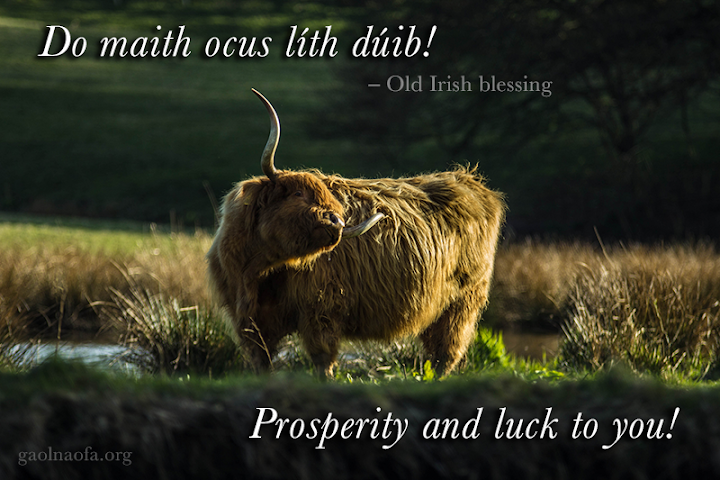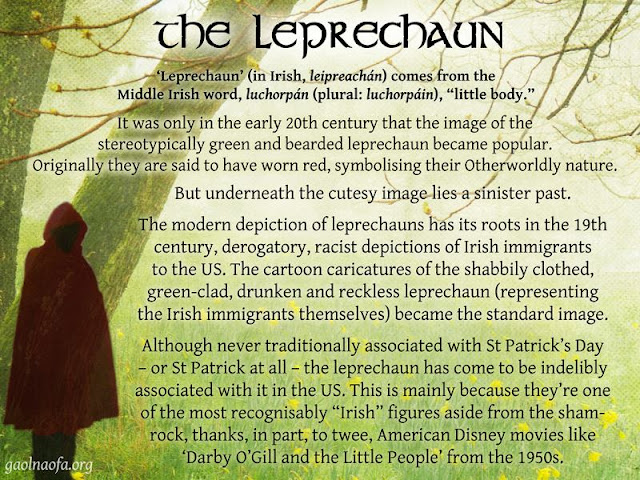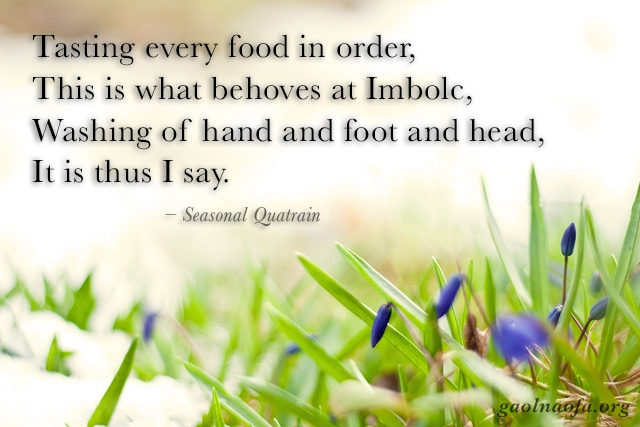Memes – Archive 3
Please note: The images we’ve used in creating these memes are courtesy of talented Scottish, Irish, Welsh and American photographers who have been kind enough to either grant us permission or licence these as Creative Commons on Flickr. The Creative Commons licence they have been released under means you are welcome to share these images on your social media freely, provided you give credit to the original photographer and a link back to the CC licence, as we have done.
Original photo by Kyle Brown – Dawn on the Mississippi River
Although Gaol Naofa as an organisation is generally neutral when it comes to politics, as a council we have decided this is too important and vital an issue to stay silent. In addition to our avowed stance on Indigenous Solidarity, we believe that as Gaelic Polytheists we have a duty to honour and respect the land spirits of wherever we reside, and advocate for the protection of the environment and sacred sites that will be affected by things like this proposed pipeline.
In that spirit, a number of our members, along with those in our related organisation, CAORANN, have been joining in prayer with our friends and relatives who are at the demonstrations and prayer vigils in Washington DC, at sacred sites all along the proposed route of the Dakota Access/Bakken Pipeline, and at the sacred waters all over the world. Some of the people on the front lines of this struggle have been instrumental as advisors to our organisation, and without them, we probably would not exist.
The young people from Standing Rock reservation have run all the way from the Dakotas to Washington, DC to bring awareness to the danger facing our water supply. We are so proud of them.
We have been praying at the water, making offerings, singing and praying for protection. We are sending love, strength and gratitude to the runners and the land/water defenders who are carrying this forward for all of us. Slàinte Mhath.
Prayer
From the Center of the Land
A Shail-Spioradain,
The spirits are guarding the water
The spirits are guarding the land
Who speaks for the waters?
Who speaks for the land?
Sacred waters of Turtle Island
Watershed of Oceti Sakowin
Ogalala Aquifer, sacred
Rivers Mnišoše, Mníšošethaka, Iowa, Illinois
and every tributary and well and stream
feeding spreading flowing
into us all.
The water is in us all.
Every time you feel the thirst
Every time you reach for water
you hear us. The spirits of the land and waters
The ancestors upon whose bones you stand.
Hear us.
Sacred waters from which we are born
flowing from the lands of our ancestors,
Abhainn Chluaidh, Uisge Dhè, An Life, An Bhóinn,
Flowing to the ocean, dancing across
to the shores of Turtle Island
merging and twining as one.
Who speaks for the water?
Who speaks for the land?
From sacred Standing Rock, reaching out worldwide,
to the all the sacred rivers, flowing, and circling back
to the center again. As one.
Land defenders crying, praying, “Come, Protect the water!”
Land defenders rising, singing, “We Protect the Water!”
The waters flow free. Clear. Strong. As one.
Pure. Sacred. Forever. As one.
Slàinte Mhath.
With love and gratitude to the youth, Elders and allies of Standing Rock and all the water runners, in Solidarity. – An Chomairle Ghaol Naofa
Notes:
- A Shail-Spioradain – Gaelic for “Oh Guardian Spirits”
- Turtle Island – name used by many Indigenous North American Peoples for the North American continent
- Oceti Sakowin – The Seven Fires Council aka The Great Sioux Nation or the Lakota and Dakota people
- Mnišoše – Lakota (Lak?ótiyapi) name for the Missouri River
- Mníšošethaka – Dakota (Dakhótiyapi) name for the Mississipi River [please note, the second-last “a” is supposed to be a
- Abhainn Chluaidh, Uisge Dhè, An Life, An Bhóinn, – In both Gaelic and Irish, “River Clyde, River Dee, Liffy and Boyne”
- Standing Rock – The Lakota reservation where they are blocking the proposed pipeline, and where the runners began their journey on foot to Washington D.C.
- Slàinte Mhath – Gaelic for “Good Health/Strength/Wholeness”
Prayers for protection, healing, peace
and comfort during this time of grief
and righteous rage.
To everyone in Orlando
To the streets of Pride, worldwide.
To all of our LGBTQ2 loved ones
Family, lovers, friends, children, grandchildren
and ourselves.
Holy.
Ancestors.
You whose hands we held, dying of AIDS,
of gaybashing, of hate crimes, of misogyny
of all the phobias turned outwards
that took our loved ones’ lives.
We call your names. Guide us now.
Goddesses of healing and battle, Brigid, Morrígan,
hold and comfort our wounded,
rally our dead and fight like hell for the living.
We call you now.
In pride, in power, in resistance.
Slàinte Mhath.
Our prayers are with everyone in Orlando, and everyone who’s been affected by this homophobic and racist hate crime (for anyone who didn’t know, not only was the shootout at a gay club during Pride month, but it was Latino night and a drag show).
For those of us who lived through earlier eras, this is bringing back hard memories of when we, too, were shot at or jumped just for going to a gay club, when we held vigils for people murdered by gaybashers, where people we had been with on the barricades turned up dead after being hassled at Pride. Those days are not that long gone, and this is a flashback to when our marches were not “Pride,” but “Liberation.”
This meme includes one of the Winged Victories from a monument in Dublin. She has a shield of protection and has taken away the sword from the enemy and broken it. The background is a photo by Diana Davies of the very first Gay Pride rally, aka Christopher Street Liberation Day, aka The Gay Liberation Run, held on the first anniversary of the Stonewall Uprising.
Be safe out there, folks.
Winged Victory courtesy Wikimedia. For more about Diana Davies photos of the Gay Liberation Front.

Original image: Graham Campbell
Do maith ocus líth dúib!
Prosperity and luck to you!
Today is Là Buidhe Bealltainn in Gaelic (Lá Buidhe Bealtaine in Irish), the “Yellow Day of Bealltainn,” heralding the first day of the summer season.
Yellow flowers abound at this time of year, such as the marsh marigold or “lus buidhe Bealltainn” – the “yellow plant of Bealltainn.” The association of yellow, resembling gold, symbolises prosperity and increase, and the butter that is traditionally churned throughout the summer season.
For more information see: Links and things for Bealltainn.
 Original image by Zoltán Vörös
Original image by Zoltán Vörös
Tír gan teanga, tír gan anam – A country without a language is a country without a soul.
 Original background image by Nick Kenrick
Original background image by Nick Kenrick
The leprechaun (Irish: leipreachán) comes from the Middle Irish word luchorpán (pl. luchorpáin), which is thought to mean “little body” in reference to its most obvious feature – the leprechaun’s small stature.
It was only in the early 20th century that the image of stereotypically green and bearded leprechaun became popular. Originally they are said to have worn red, symbolising their Otherworldly nature.
The modern depiction of the leprechaun has its roots in derogatory, racist depictions of Irish immigrants to the US from the 19th and early 20th century. The cartoon caricatures of the shabbily clothed, green-clad, drunken and reckless leprechaun (representing the Irish immigrants themselves) ultimately became the standard image.
The leprechaun has always been mischievous and magical, but the image of the leprechaun as a tiny shoemaker with a pot of gold came later. It is said they are lone creatures who tend to shy away from human contact from fear of being captured. Modern legend has it that if they are caught they will grant wishes in order to protect their stash of gold. However, there is irony and perhaps another level of bigotry in the modern fantasy that these shabbily-dressed, poor creatures are secretly wealthy – a trope seen in the modern racist caricature of the “welfare queen,” for instance, which was created during the Reagan administration in America to deny assistance to citizens who were living in poverty.
Although never traditionally associated with St Patrick’s Day – or St Patrick at all – the leprechaun has come to be indelibly associated with the festival in the US. This is mainly because they’re one of the most recognisably “Irish” images aside from the shamrock, thanks, in part, to twee, American Disney films like “Darby O’Gill and the Little People” from the 1950s.
For more examples of the degraded images of the leprechaun, and their marked similarity to images used in anti-Irish propaganda, see here (a google image search on “anti-irish sentiment” will result in many similar ones) and compare them to this one or this one, for example.
 Original image by “Andrew.”
Original image by “Andrew.”
| A Brigit bennach ar sét, Nachar-táir bét ar ar cúairt; A challech al-Lifi lán; Co rísem slán ar tech úait. |
O Brigit bless our way, That evil come not to us on our journey; O wise-woman from full Liffey; May we safely reach home by thine aid! |
This is attributed to Mo Ling, asking Brigit for safe passage. For the original see ‘The Boroma,’ translated by Whitley Stokes.
Notes: We have chosen to translate a challech – “O nun” by the alternative meaning of “wise-woman.”
 Original image by Billy Wilson
Original image by Billy Wilson
| Fromad cach bíd iar n-urd, issed dlegair i n-Imbulc, díunnach laime is coissi is cinn, is amlaid sin atberim. |
Tasting every food in order, This is what behoves at Imbolc, Washing of hand and foot and head, It is thus I say. |
La Fhèill Brìghde sona dhuibh uile! A very happy Imbolc to you all!
This quatrain was translated by Kuno Meyer in his Anecdota Oxoniensia: Mediaeval and Modern Series (Part 8), 1894, p49.
 Original image by Kris Williams
Original image by Kris Williams
|
Thig crioch air an saoghal, |
The world will pass away, but love and music will endure. |
With love, holding our loved ones in our thoughts and prayers.
Too much death recently. Too many voices lost.
Proverb from Gaelic Proverbs and Proverbial Sayings, by T.D. MacDonald.

Original image by Matthew Kehoe
 Original image by Susan
Original image by Susan
| Fàilte ort féin, a ghrian nan tràth, ‘S tu siubhail ard nan speur; Do cheumaibh treun air sgéith nan ard, ‘S tu màthair àigh nan reul. |
I welcome you, sun of the seasons, As you travel the skies aloft; Your steps are strong on the wing of the heavens, You are the glorious mother of the stars. |
| Thu laighe sìos an cuan na dìth Gun dìobhail is gun sgàth, Thu ‘g éirigh suas air stuagh na sìth, Mar rìoghain òg fo bhlàth. |
You descend into the deadly sea Without distress and without fear; You rise up on the wave of peace, Like a youthful Queen in bloom. |
As the winter solstice marks the longest night of the year, the morning after marks the welcome return of the strengthening sun. This prayer, recorded by Alexander Carmichael, is a greeting to the sun, which is traditionally said when it is first seen that day. It’s a perfect prayer for the morning after the solstice.
In Irish lore, Áine is associated with the Midsummer sun, while her sister Grian may be associated with the sun of Midwinter; in Scotland, the Cailleach is sometimes referred to as “the daughter of Grianan” (meaning “the little sun” – as in the winter sun), because that is the season she rules over. As we greet the sun on Wednesday morning with this prayer, we might make offerings to Grian or the Cailleach.
As Kathryn notes, we can’t say for sure if Grian (whose name simply means “Sun”) actually is a goddess in her own right, but her association with a hill near to Áine’s own – and the fact that she and Áine are described as sisters in the local lore – makes it seem likely. For more information on Áine and Grian, see our video on our Youtube channel:
Prayer from the Carmina Gadelica with translation by Kathryn Price NicDhàna.